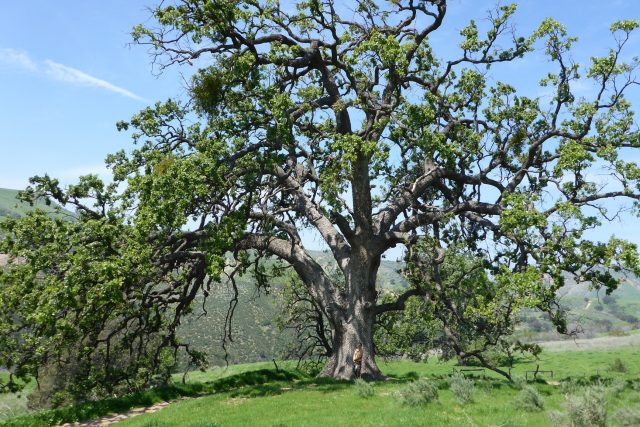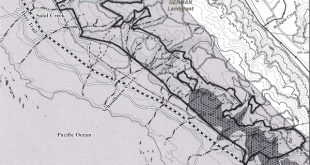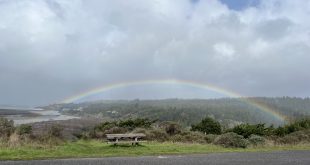November 21, 2023
Sonoma County Board of Supervisors
575 Administration Drive
Room 100 A
Santa Rosa, CA. 95403
To the Honorable Members of the Sonoma County Board of Supervisors:
Friends of Gualala River thanks you for the opportunity to comment in support of the proposed Oak Woodland Protection Ordinance, a critically important step in saving our wild oaks, one of Sonoma County’s most iconic natural resources.
Friends of Gualala River (FoGR) is an independent non-profit grassroots watershed protection organization formed to share common concerns and research regarding the welfare of the Gualala River, its estuary and habitat. FoGR’s goal is to protect the Gualala River watershed and the species living within it.
Oaks have been an important wild resource to people in the Gualala watershed for millennia. The watershed is the ancestral land of the Kashia Pomo whose traditional foods included acorns from the abundant tan oaks and oaks growing here. Oaks are known to be keystone species in many of the most biodiverse ecosystems in California. In our watershed the oak savannas that stretch to the north, east, and south, especially in the basins of the Wheatfield and South Gualala Forks, are an essential component of the watershed biodiversity. A drive east along Skaggs Springs Road affords spectacular views of these beautiful oak-studded grasslands which were originally stewarded by the Kashia. Today they are principally cattle ranches and vineyards.
With few paved roads and 98% private ownership, the vast interior of the watershed was largely terra incognita until quite recently. But a new era of interest in conservation began as a result of the acquisition of large tracts of land by The Conservation Fund, now the largest landowner in the watershed. These lands became the Gualala Forest and the Buckeye Forest. A surprisingly high diversity of oak species were discovered when botanical field surveys were done. Some 12 species of oak and oak hybrids were found within the Buckeye Forest property. Fortunately these oak woodlands will be protected under TCF’s Buckeye Forest Integrated Resource Management Plan (https://www.conservationfund.org/wp-content/uploads/2023/06/Buckeye__IRMP_3_6_17_Final_reducedsize.pdf).
Elsewhere, intensive field botanical surveys have not been done on other lands because of private property ownership. However, the entire watershed was aerially mapped through LiDAR in a county-wide project called Sonoma Vegetation Map completed in 2017, showing more detail in the extensive oak woodlands in the Gualala watershed and providing data for further study (https://sonomavegmap.org).
Shortly thereafter, the Sonoma County Ag and Open Space undertook the Vital Lands Initiative to help set priorities for difference land uses in the County. The Vital Lands Interactive Map shows that the oaks woodlands in the Gualala River watershed are a Priority Area for Wildlife Habitat and Movement, a regional concern. The map also shows that Priority Croplands (i.e., vineyards) are often intermingled with the oak woodlands, a condition that leads to inevitable conflicts in land use without protections for oaks (https://sonomaopenspace.maps.arcgis.com/apps/webappviewer/index.html?id=4e93808b8ea245bfa739caccdb0169fe).
Finally, the Sonoma Land Trust also maintains an interactive map which shows areas in the County that have fallen under some form of protection. The map demonstrates how few oak woodlands have been protected thus far in the Gualala River watershed (https://sonomalandtrust.org/interactive-map/).
Adequate comprehensive conservation planning for the Gualala watershed has yet to be undertaken. However, Sonoma County residents everywhere want to see oak woodlands protected. And the County has demonstrated its interest in mapping its resources over the past decade as a key step in the right direction. It seems like the natural next step is to put in place legal protections for oaks and oak woodlands.
On behalf of the over 750 supporters of Friends of Gualala River who endorse protections of the watershed and its natural resources, including its oaks, we urge the Board of Supervisors to pass the Oak Woodland Protection Ordinance.
Thank you.
Sincerely,
Nathan Ramser
President of the Board

For more information:
Why Sonoma County Needs an Oak Woodland Protection Ordinance
By Kate Marianchild, author of Secrets of the Oak Woodlands: Plants and Animals among California’s Oak
A. Sonoma County has no ordinance or regulation in place to specifically address the clear-cutting or removal of oak woodlands, thus leaving them vulnerable to removal without county oversight or regulation and creating the potential for denuded hillsides, destabilized soil, silted, and polluted streams, die-offs of birds, mammals, fish, and other animals, and loss of extensive ecosystem services (itemized in paragraph F).
B. 80% of oak woodlands occur on private lands and have no legal protections from the State of California.
C. Sonoma County’s oak woodlands are a beautiful, quintessential, and irreplaceable component of the character and cultural history of our region.
D. Sonoma County’s oak woodlands have largely untapped ecotourism potential.
E. Oaks support more life forms than any other plant genus in North America.
F. Oak woodlands improve soil, retain groundwater, improve surface water quality, control erosion, slow wind (and, by extension, fire); provide shade for fish-bearing streams, moderate climate extremes, improve air quality, and sequester carbon.
G. Oaks are California’s primary old-growth resource for carbon sequestration.
H. Oaks survive low- to medium-intensity fires and provide shade, moisture, and mycelium that assist other species in repopulating burned areas.
I. Oak woodlands improve quality of life and property values by providing serene and lovely landscapes for walking, hiking, biking, picnicking, camping, swimming, birding, wildlife watching, and stargazing.
J. Oak woodlands provide essential food and nesting habitat for native pollinators and honeybees, which have significant commercial value to local agriculture.
K. Oaks leaves are the most important food in North America for caterpillars, and caterpillars are essential food for most baby songbirds. As mature oaks disappear, so do birds and the birdsong we love so much.
L. Oak woodlands support the greatest animal biomass found in any terrestrial habitat type in California.
M. Old-growth oaks and other native trees sequester exponentially more carbon and provide homes and food to vastly more animal species than young trees. These ecosystem services cannot be replaced for hundreds of years by newly planted seedlings.
N. Mature oak woodlands are refugia for oak- and oak woodland-dependent species, many of which are suffering population declines statewide.
 Friends of Gualala River Protecting the Gualala River watershed and the species living within it
Friends of Gualala River Protecting the Gualala River watershed and the species living within it


